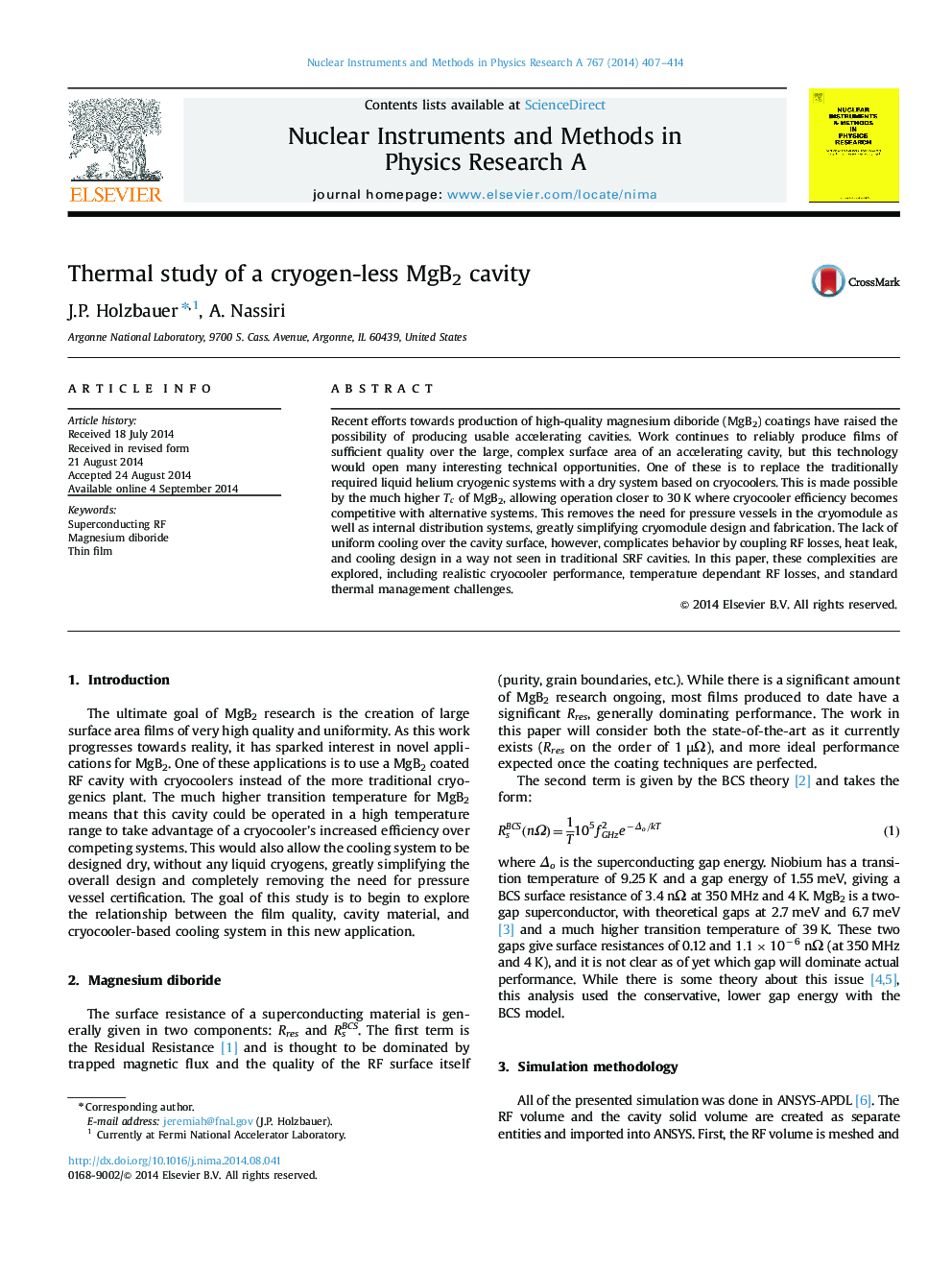| Article ID | Journal | Published Year | Pages | File Type |
|---|---|---|---|---|
| 8174944 | Nuclear Instruments and Methods in Physics Research Section A: Accelerators, Spectrometers, Detectors and Associated Equipment | 2014 | 8 Pages |
Abstract
Recent efforts towards production of high-quality magnesium diboride (MgB2) coatings have raised the possibility of producing usable accelerating cavities. Work continues to reliably produce films of sufficient quality over the large, complex surface area of an accelerating cavity, but this technology would open many interesting technical opportunities. One of these is to replace the traditionally required liquid helium cryogenic systems with a dry system based on cryocoolers. This is made possible by the much higher Tc of MgB2, allowing operation closer to 30Â K where cryocooler efficiency becomes competitive with alternative systems. This removes the need for pressure vessels in the cryomodule as well as internal distribution systems, greatly simplifying cryomodule design and fabrication. The lack of uniform cooling over the cavity surface, however, complicates behavior by coupling RF losses, heat leak, and cooling design in a way not seen in traditional SRF cavities. In this paper, these complexities are explored, including realistic cryocooler performance, temperature dependant RF losses, and standard thermal management challenges.
Related Topics
Physical Sciences and Engineering
Physics and Astronomy
Instrumentation
Authors
J.P. Holzbauer, A. Nassiri,
